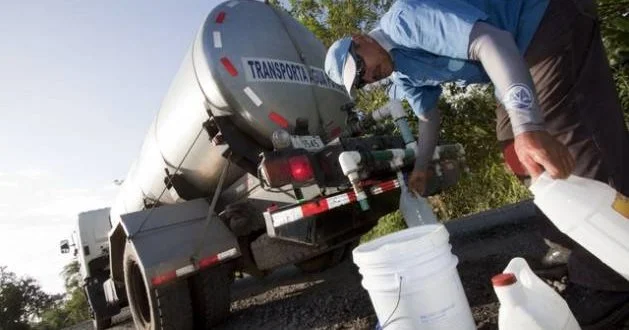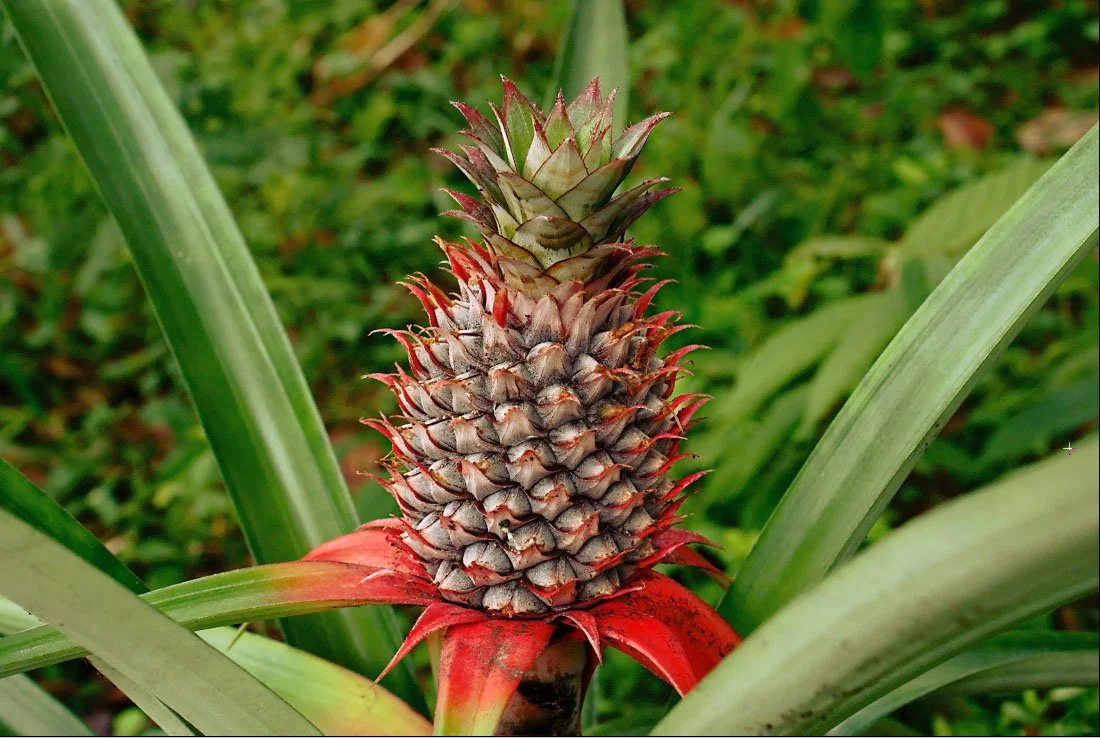The Real Cost of a Cheap Pineapple from Costa Rica
In stores and supermarkets in North America and Europe, you can buy a pineapple for just a couple of dollars. But what is the real cost behind that cheap price?
Today we commemorate sustainable gastronomy day by explaining how this popular and delicious fruit is impacting the lives of people, sloths, and the rainforest.
Costa Rica exports more pineapples worldwide than any other country. Over 40% of the total exported pineapples come from Costa Rica, a value worth US$ 981 million. Pineapple production in Costa Rica has been criticized for years following public reports of public health problems linked to the contamination of soil and water by chemical substances used on farms.
Pineapple monocultures are causing serious negative impacts on the environment and on local communities. Even though small and independent farmers exist, the big transnational companies such as Dole or Del Monte maintain all of the power. They set the price to pay to small farmers, endorsing the already existing inequalities in some of the low-income areas of the countries.
Pineapples affect sloth populations
In Costa Rica, rescue centers and sanctuaries are receiving a high number of baby sloths with genetic abnormalities. Most of them show similar deformities: missing or extra fingers/toes, partial or full albinism, misshapen limbs, or malformed ears. Most of these orphaned sloths don't survive more than a few months. Some of them might reach adulthood but they won't ever be able to be reintroduced into the wild.
An orphaned baby two-fingered sloth that was born with just one finger!
The cause of these abnormalities is likely multifaceted, but two major factors stand out: habitat fragmentation and pesticides. All of the sloths displaying genetic abnormalities are found in areas with high levels of agriculture and rainforest disturbance. Sloths are not the only species to be affected by these problems.
In recent years, reports of mantled howler monkeys with yellow patches in their fur have increased. This is alarming scientists who believe that the monkeys are consuming too much sulfur from pesticides on the leaves they feed on. Most of these animals live in areas close to pineapple and banana plantations, where the pesticides contaminate the entire ecosystem. Both howler monkeys and sloths are folivorous, so they are probably consuming pesticides directly from the leaves they eat.
Did you know that Costa Rica uses more pesticides (per capita) than any other country in the world? On average Costa Rica uses 18.2 kilograms of pesticides per hectare of cropland. In comparison, a country like the United States uses close to 2.5 kilograms per hectare of cultivated land.
To properly understand the cause behind the sloth deformities we launched a major study into the genetic health of wild sloth populations in 2016, taking data and hair samples from 100 wild-born sloths. By identifying the cause of the genetic abnormalities, we can develop the correct conservation strategies required to mitigate the problem. The results of this study will be published in the upcoming weeks, so stay tuned for the update!
Unethical labor conditions
The Rainforest Alliance, a scheme that provides certification to the pineapple producers of Costa Rica, is facing allegations of the illegal use of pesticides and labor exploitation of undocumented immigrants.
Rainforest Alliance says its certified plantations must adhere to certification rules, including “no mistreatment of workers”, and they are required to comply with strict audits and inspections.
The biggest problem is that the inspectors usually only have access to workers and facilities that are prepared by the pineapple plantations. The managers of the plantations often know in advance when the next inspections are coming, and the workers are interviewed in front of their bosses so they are not allowed to tell the truth about the conditions in the plantations.
Pesticides and pollution of pineapples
The use of pesticides is a well-known problem in Costa Rica. Studies conducted by the University of Costa Rica show the presence of Bromacil (a very dangerous pesticide) in rivers, wetlands and underground waters. Bromacil was banned in 2017, but there are reports of its illegal use nowadays.
El Milano in Siquirres is a community that has been forever damaged by the use of pesticides from neighboring pineapple plantations. In 2003 it was discovered that the primary source of drinking water for the entire community was heavily polluted with dangerous pesticides used in the farms.
It wasn't until 2007 that the ministry of environment began to transport water to these communities with water-tank trucks. However, the people living there still have to use the polluted tap water whenever the water truck doesn’t arrive. This has led to several people being intoxicated and hospitalized due to pesticide consumption.
During the last 15 years the government of Costa Rica has had to invest 3 million dollars of tax-payer money to deliver clean water to El Milano. The real cost for the rest of these communities is still unknown.
An official from Aguas y Alcantarillados collecting water for the residents of El MIlano. Photo: Semanario Universidad.
Concerning expansions
According to satellite images provided by MOCUPP, pineapple plantations occupied 57,000 hectares of land in Costa Rica in 2016. However, the latest government report in 2019 indicates an alarming 300% increase over 3 years. 3,824 hectares of new pineapple plantations are invading protected areas, and 16,386 hectares are found in wetlands.
Pineapple expansion in Costa Rica. Source: SNIT
Not everything is bad news
At the moment there are 88 active lawsuits against pineapple companies in Costa Rica, and there is growing hope for the future that the government can provide sustainable solutions for the people and communities affected.
In 2016, a new 500 hectare pineapple plantation was proposed which would have been located less than five kilometres from the core of the important Térraba-Sierpe wetland ecosystem. Thankfully, the Ministry of Environment of Costa Rica (MINAE) suspended the project due to the imminent environmental impact. Even Carlos Alvarado (the president of Costa Rica) celebrated the decision on his social media:
“I welcome the decision of MINAE to suspend the environmental viability of a project for pineapple cultivation near the Térraba-Sierpe National Wetlands. This reaffirms our commitment to the environment, to Protected Wildlife Areas, and to the protection of archaeological heritage.”
Several organizations are also working hard to instigate change. The University of Costa Rica has spoken about the negative impacts of this agro-industry and they launched a call to action for politicians, academics, scientists and pineapple companies themselves to change the situation.
The university is also conducting scientific research and developing solutions to promote environmental-friendly farming practices. They also offer support to local communities and provide them with the necessary tools to fight the expansion of pineapple monocultures in their areas.
What can we do to help
What can we do as consumers? We must understand that we have the power. By choosing carefully what kind of products we buy, we can have a positive impact. Think twice before buying that $3 pineapple. Is there an alternative locally grown fruit that you could buy instead? If you need to buy a pineapple, try to find an organic option from an independent farmer and avoid the big monoculture companies that are responsible for so much rainforest destruction. This might be a bit more expensive, but it is nothing compared to the price being paid by the people and wildlife of Costa Rica.
Buying locally grown and organic produce supports small independent farmers and minimizes the greenhouse emissions caused by transporting food around the world. Although it is difficult to avoid this in a globalized world, by choosing where and how we buy these items we can all make an impact.
Many supermarkets simply don't stock the more ethically and organically produced food. This can usually be changed just by asking! If you let them know that there is a demand for those items then they will find a way to provide them for you. Spend just a little time today contacting your local supermarket, and the knock-on effects will be felt around the world.
A decrease in demand for cheap tropical fruits is the best way to prevent monoculture plantations from encroaching further into the remaining rainforest.
Here at SloCo we are working hard to protect the sloth’s green rainforest home. Every month we grow thousands of ‘sloth-friendly’ trees in our SloCo forest nursery and we plant them in disturbed areas where habitat loss is threatening the survival of wild sloths. These trees not only help to fight climate change, but they also provide food and shelter for sloths!







